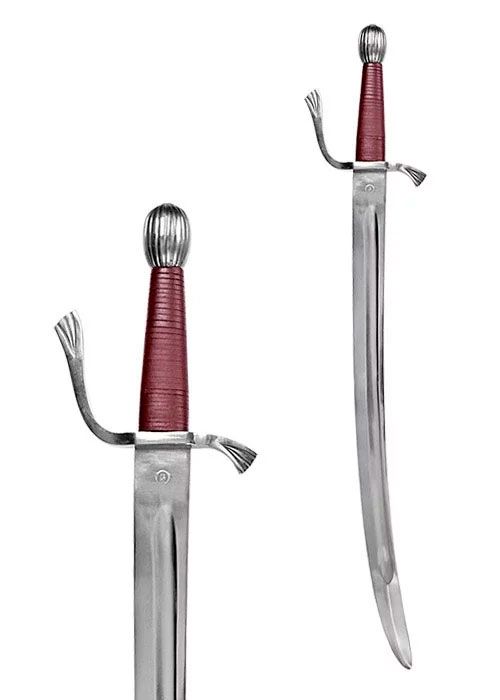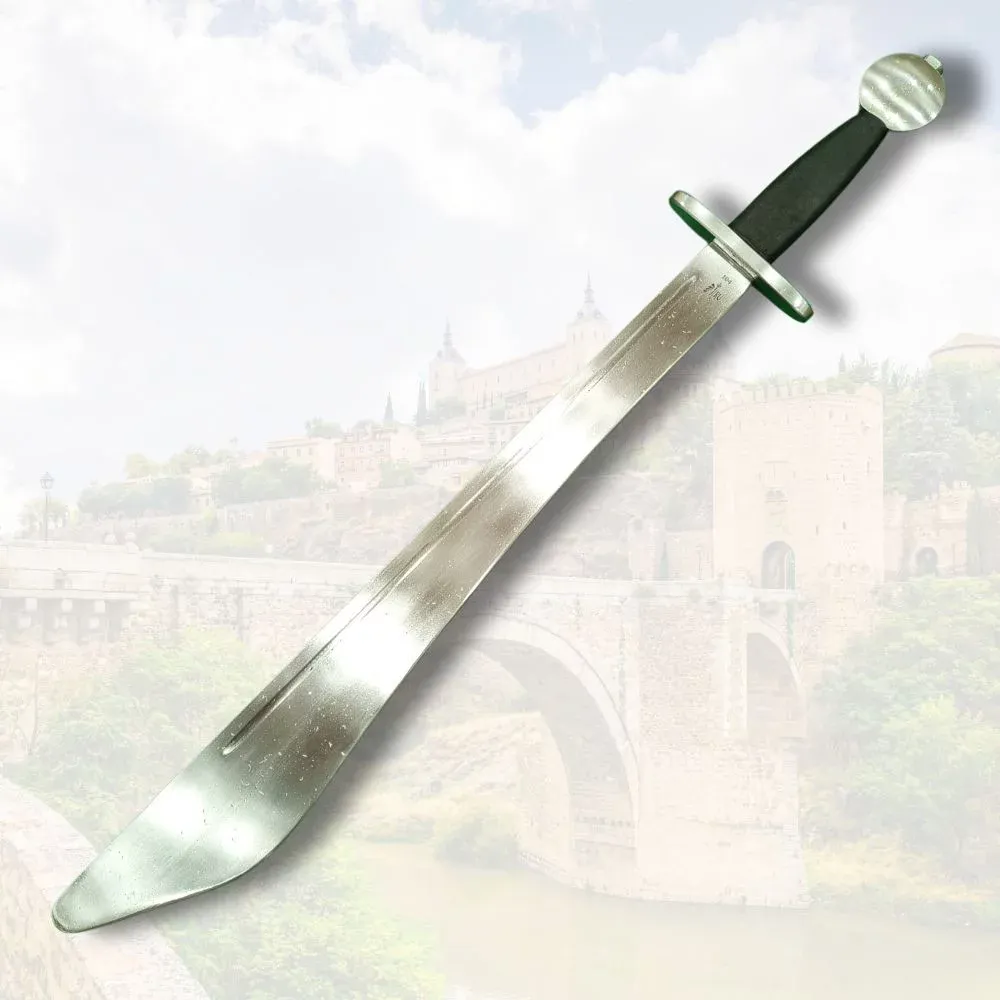What is a Bracamarte?
In the fascinating world of medieval weapons, the bracamarte holds a special place. Often considered a combination between a sword and a large knife, this weapon was a symbol of power and skill on the battlefield. It has a rich history and unique characteristics that make it stand out among other swords from the Middle Ages.
Origin and Etymology of the Bracamarte
The term "bracamarte" has quite an interesting origin. It comes from the French "braquemart," which is an adaptation of the German "Großes Messer," meaning "large knife." Deeper roots can be traced back to Flemish Dutch as "braeck-meeser," or "bone-breaking knife." This name reflects the weapon's primary function: large cuts and slashes, effective for breaking bones and light armor in battle.
Detailed Description of the Bracamarte
The essence of the bracamarte lies in its distinctive design:
- Wide and Heavy Blade: Designed to be wielded with one hand, the blade of the bracamarte is remarkably wide and has a considerable weight, providing strong cutting power.
- Distinctive Curvature: The blade is single-edged, with a curve upwards near the tip, facilitating powerful slashing blows.
- Variable Design: Its appearance could range from a curved sabre to a modern machete, demonstrating its versatility and effectiveness in combat.

Specific Characteristics of the Bracamarte
One of the most important features of this sword is its complex guard system:
- Quillons: In its early versions, the bracamarte featured cross-shaped quillons. With the evolution into the Renaissance, these guards progressed into "S" shapes, especially common in Italian and German versions.
- Diverse Names: Depending on the region, it was known as "alfanje" or "terciado" in Spain, demonstrating its wide adoption and adaptation.
The Bracamarte in Combat
The use of the bracamarte was not limited to foot soldiers; it extended to various military units:
- Archers and Infantry Soldiers: This weapon served as an effective complement to archers, due to its capability to inflict severe damage in close combat.
- Use in Cavalry: From the 13th century onward, the bracamarte was also adopted in cavalry, where its slashing power was appreciated even while in motion.
- In the Spanish Tercios: In the famous Tercios, the integration of the bracamarte alongside the bucklers proved to be highly effective.
Historical Examples and Reproductions
Today, enthusiasts of historical weapons can appreciate ancient examples of the bracamarte in the Royal Armory of the Royal Palace of Madrid. History lovers and practitioners of historical fencing can also enjoy functional reproductions, meticulously designed to capture the essence of these historical swords.

Over the years, the bracamarte has not only left a cultural and military mark in its time but continues to inspire modern historical reenactors and collectors who seek to revive the power and elegance of this remarkable medieval sword.
















